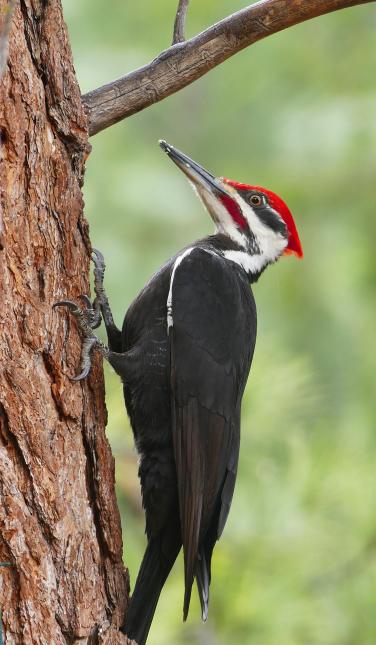Experiencing Woodpeckers in Florida: Variety Diversity and Identification
Wiki Article
Introducing the Secrets of Woodpeckers: Habits, Environment, and Extra
Woodpeckers, with their unique behaviors and specialized adaptations, have actually lengthy attracted researchers and nature lovers alike. By discovering the secrets surrounding woodpeckers' behavior and environment selections, a much deeper understanding of these bird wonders emerges, offering a glance right into their interesting world.Woodpecker Behavior Insights
In taking a look at woodpecker behavior, a remarkable display of specialized abilities and adaptations arises, losing light on their exceptional ecological specific niche. Woodpeckers, recognized for their unique drumming on trees, possess a selection of behavioral attributes that contribute to their survival and success in their setting.Furthermore, woodpeckers show an unique feeding habits characterized by their capability to remove insects from tree bark using their specialized beaks. Their lengthy, barbed tongues aid in recording prey, while their strong neck muscular tissues provide stability and accuracy throughout pecking motions. This feeding technique permits woodpeckers to access covert insect larvae and remove them with remarkable performance.
Habitat Preferences and Selection
What variables affect the habitat choices and selection of woodpeckers? Woodpeckers are extremely versatile birds understood to inhabit various atmospheres worldwide. They do show preferences for certain habitat qualities. One important variable affecting woodpecker habitat selection is the availability of suitable nesting sites. Woodpeckers usually like woodlands with a mix of fully grown trees that give enough possibilities for cavity excavation. These cavities function as essential nesting and roosting sites for woodpeckers and are vital for their breeding success.Furthermore, woodpeckers show a preference for environments with a bountiful supply of food resources. They are mainly insectivorous, feeding upon beetles, ants, larvae, and other pests located in rotting wood or tree bark. Therefore, woodpeckers often tend to favor wooded locations with a diverse insect population to meet their nutritional demands.
Additionally, the existence of dead or rotting trees is another crucial element in woodpecker habitat choice. These trees not only give food sources yet likewise offer ideal substrate for tooth cavity excavation. Dead trees are important for the upkeep of healthy woodpecker populaces, as they play a crucial role in the woodpeckers' life process and ecosystem characteristics.
Feeding Habits and Diet Regimen Composition
Woodpeckers show a specialized feeding behavior concentrated on foraging for bugs within various environments. Their diet largely includes bugs such as beetles, ants, caterpillars, and spiders, which they find by touching on tree bark and paying attention for the audio of movement inside. Woodpeckers utilize their solid beaks to pierce right into the wood and their long, barbed tongues to remove target from crevices. Along with insects, woodpeckers also take in tree sap, fruits, nuts, and seeds, including variety to their diet plan relying on investigate this site the season and accessibility of food resources.The foraging methods of woodpeckers are well-adapted to their arboreal way of living (Woodpeckers in Florida). Their capacity to dig deep click here to read into timber not only supplies them with food but additionally aids in developing nesting dental caries and developing areas. Woodpeckers play a crucial role in maintaining the wellness of woodlands by regulating insect populaces and assisting in the decay of wood. Comprehending their feeding practices and diet make-up is essential for preservation initiatives focused on preserving these unique and valuable birds.
Drumming Sounds and Interaction
Using rapid drumming audios on different surface areas, woodpeckers use an unique form of interaction to indicate territory borders and draw in mates. This drumming habits is not only a method of communication yet likewise serves as a method for woodpeckers to establish their visibility within a specific location. The intensity, rate, and pattern of the drumming can communicate important info to other woodpeckers in the location.Woodpeckers use drumming audios to announce their visibility in a territory and to caution off possible trespassers. The loud and repeated nature of the drumming works as a clear signal to other woodpeckers that the location is already asserted. This helps in minimizing conflicts and lessening physical confrontations between people.

Survival Adaptations and Specialized Anatomy

Conclusion
Finally, woodpeckers display distinct behaviors, such as drumming audios for communication, and have specialized makeup for survival in their selected habitats. Their feeding behaviors and diet plan composition better demonstrate their adaptability to numerous settings. By comprehending these elements of woodpeckers, researchers and guardians can much better protect and preserve these fascinating birds and their environments.Report this wiki page